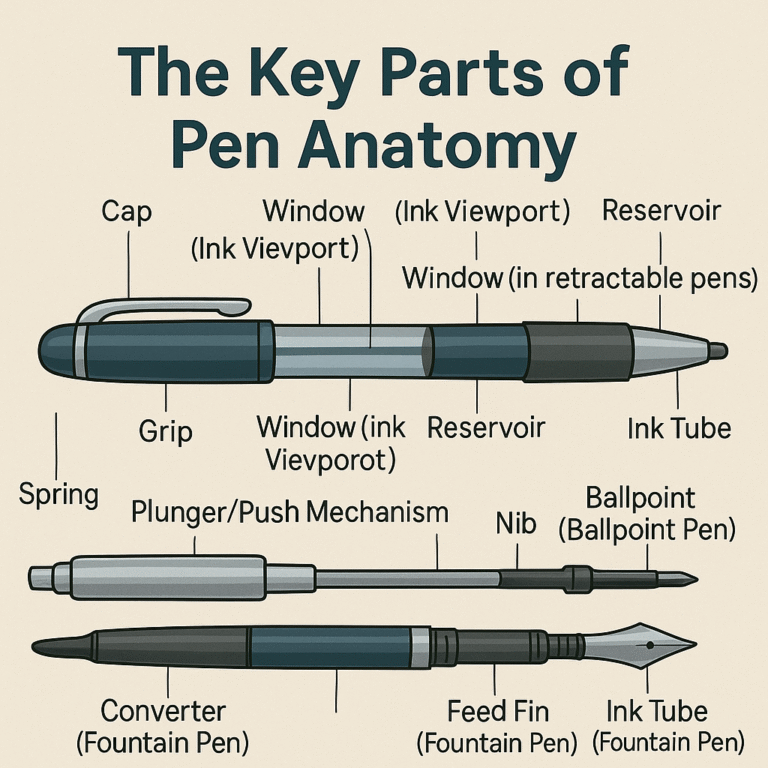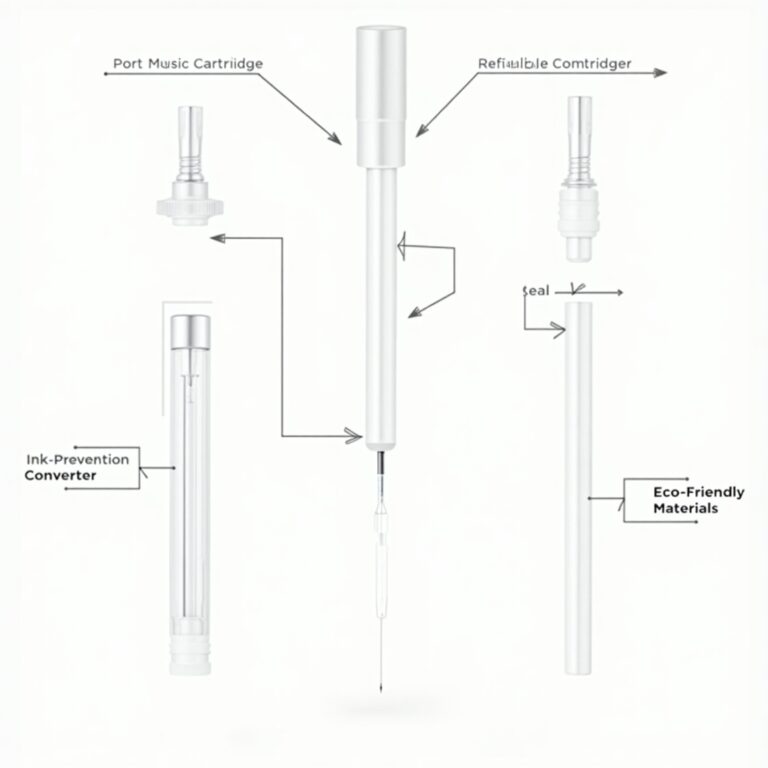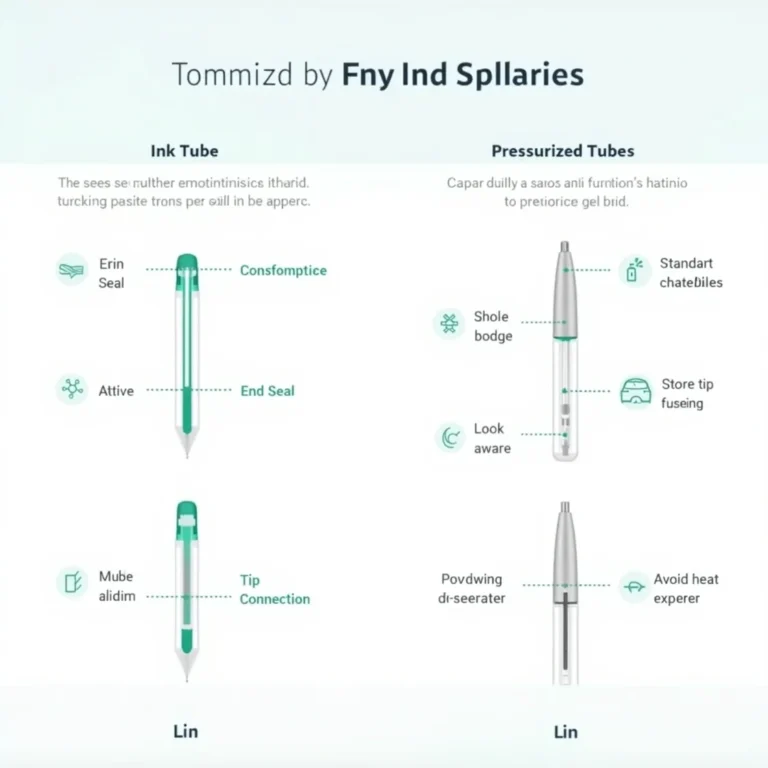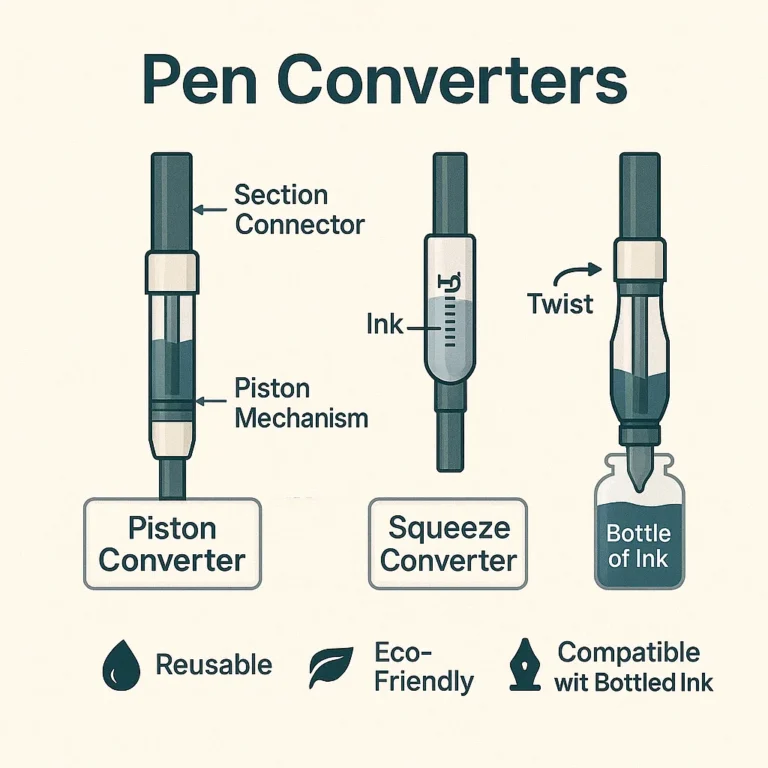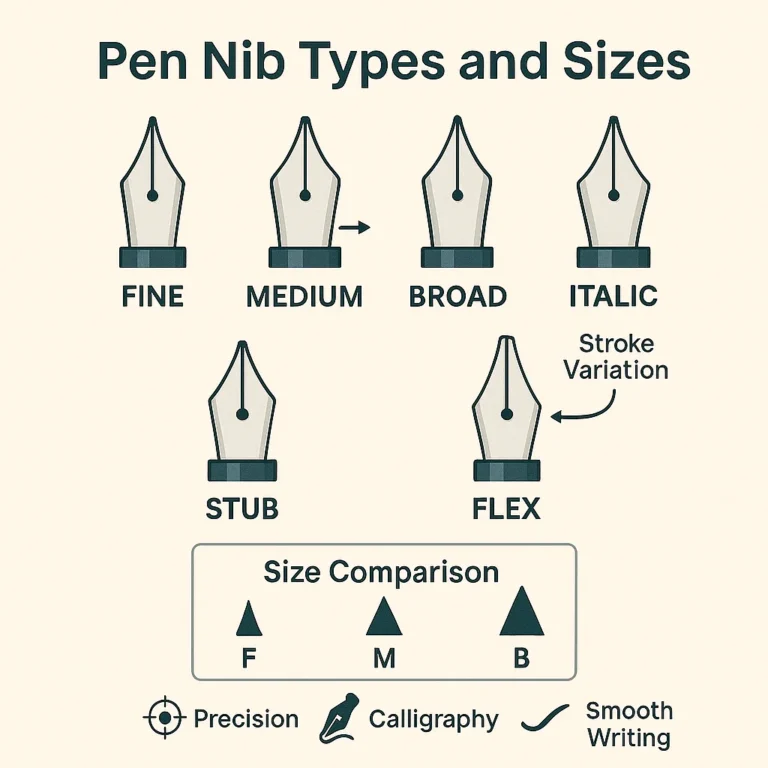Ink Reservoir: Types, Function, and the Role in Pen Performance

The ink reservoir is the core component responsible for storing and supplying ink in a pen. Whether in a fountain pen, rollerball, or refillable system, the reservoir plays a crucial role in determining how long the pen lasts, how smoothly it writes, and how reliable it is during use. Understanding the types of ink reservoirs, their specific functions, and how they influence overall pen performance helps users choose the right pen for their writing needs.
Key Takeaways
- Pens store ink in different ways, including cartridges, converters, piston systems, and vacuum reservoirs.
- Large ink storages mean less frequent refills. Cartridges are simple for beginners. Converters offer various color options from bottled ink. Piston and vacuum systems hold more ink and reduce leaks.
- A quality ink reservoir keeps writing smooth by ensuring consistent ink flow to the nib.
- The right choice improves the writing experience for both collectors and daily users by cutting down on refills and preventing leaks.

What is an Ink Reservoir?

An ink reservoir is a key part of pens like fountain pens and ballpoint pens. It stores ink, allowing the pen to keep writing without needing a refill soon. The larger the reservoir, the more pages you can write on before it needs more ink.
Reservoirs come in various shapes and designs. Some are simple tubes inside the pen, while others use cartridges or converters for easy ink replacement, especially in fountain pens.
These features help prevent ink leakage and make refilling smoother.
Types of Ink Reservoirs
Ink reservoirs vary, including cartridges for one-time use, converters for easy refills from a bottle, and piston or vacuum systems giving more ink control. Each type meets different needs of fountain pen users.
Cartridge Reservoirs
Cartridge reservoirs make using a fountain pen simple. Just replace the cartridge when it’s empty. These cartridges, filled with ink, seal well to stop leaks. They fit inside your pen, making color changes or refills easy while on the move.
Cartridges suit beginners or those who prefer convenience.
Now, let’s talk about converter reservoirs which allow for more ink choice flexibility.
Converter Reservoirs
Fountain pens with converter reservoirs allow for the use of bottled ink, offering a wider range of color choices and a more sustainable writing option. To fill the converter, you either twist or push its back part to remove air, then submerge it in ink and release to draw ink inside.
This makes converters popular among enthusiasts of vintage pens and those aiming to minimize ink leakage. Converters are designed to fit where a cartridge typically would in your pen.
Piston Reservoirs
Piston reservoirs upgrade fountain pens with a mechanism that pulls ink into the pen’s body. You turn a knob to fill the pen with ink. These systems store more ink than cartridges or converters, which is ideal for frequent writers.
Vintage and modern high-quality pens often use piston reservoirs. They help avoid ink leaks and let users see the remaining ink amount, preventing surprises during critical writing moments.
Changing inks is also easier, enhancing both functionality and collection value.
Preferences cookies and Google Analytics might track these features to tailor user experiences based on their past interactions and usage trends. Users can manage their preferences to adjust how their data is used.
Vacuum Reservoirs
Vacuum reservoirs are a step up from piston ink holders. They fill with ink by pulling air to create a vacuum, which then sucks the ink into the chamber. To do this, dip the pen nib in ink and pull on a part of the pen.
This makes them efficient and reduces mess during refills. Vacuum reservoirs can hold more ink, letting you write longer without needing a refill.
How Ink Reservoirs Work
Fountain pens have ink reservoirs to hold the ink. These come in types like cartridges or pistons. The key function is to ensure smooth ink flow to the nib for leak-free writing. Pressing the nib on paper activates a lever or piston inside, creating a vacuum that draws ink into a channel leading to the nib.
Cartridge reservoirs use pre-filled tubes replaced when empty. Piston and vacuum types allow refills from an ink bottle by moving a piston or creating a vacuum. This design prevents leaks and offers color and ink choices from bottles, important for vintage pen lovers who value both tradition and modern features.
The Role of Ink Reservoirs in Pen Performance
Ink reservoirs are key for pens to write smoothly. They store ink, so you don’t need to stop and dip your pen often. Different types, like cartridge or piston reservoirs, have various ink capacities.
This determines how long you can write before a refill is necessary.
A well-designed ink reservoir prevents leaks and ensures a steady flow of ink. If overfilled or poorly made, it could leak or disrupt writing quality. For vintage pens, proper handling is crucial due to their sensitivity and design differences.
The size of the reservoir affects the pen’s weight in your hand. A balance between weight and ink capacity makes writing more comfortable and reduces hand fatigue over time.
Conclusion
Every pen needs an ink reservoir. This small part holds the ink, letting you write without stops. There are different types like cartridge, converter, piston, or vacuum. Each type affects how your pen works.
They stop leaks and ensure your fountain pen has enough ink for writing. Ink reservoirs are key in both vintage pens and modern dip pens. The right one makes writing enjoyable and prevents leaks that could void a warranty on your pen.
FAQs
1. What is an ink reservoir in a fountain pen?
An ink reservoir is the part of a fountain pen that holds the ink. It’s crucial for its operation as it supplies ink to the nib.
2. How does the size of an ink reservoir impact my writing?
The size of your fountain pen’s ink reservoir determines its capacity, or how much you can write before needing to refill it. Larger ones mean more writing time!
3. Can vintage pens also have these modern-day features like preventing leakage?
Yes, indeed! Even vintage pens come equipped with mechanisms for preventing any potential leakage from their ink reservoirs.
4. If I choose to use a dip pen instead, will I still need an ink reservoir?
Nope! Dip pens don’t require one because they’re dipped directly into an external source of ink each time you want to write something down.
